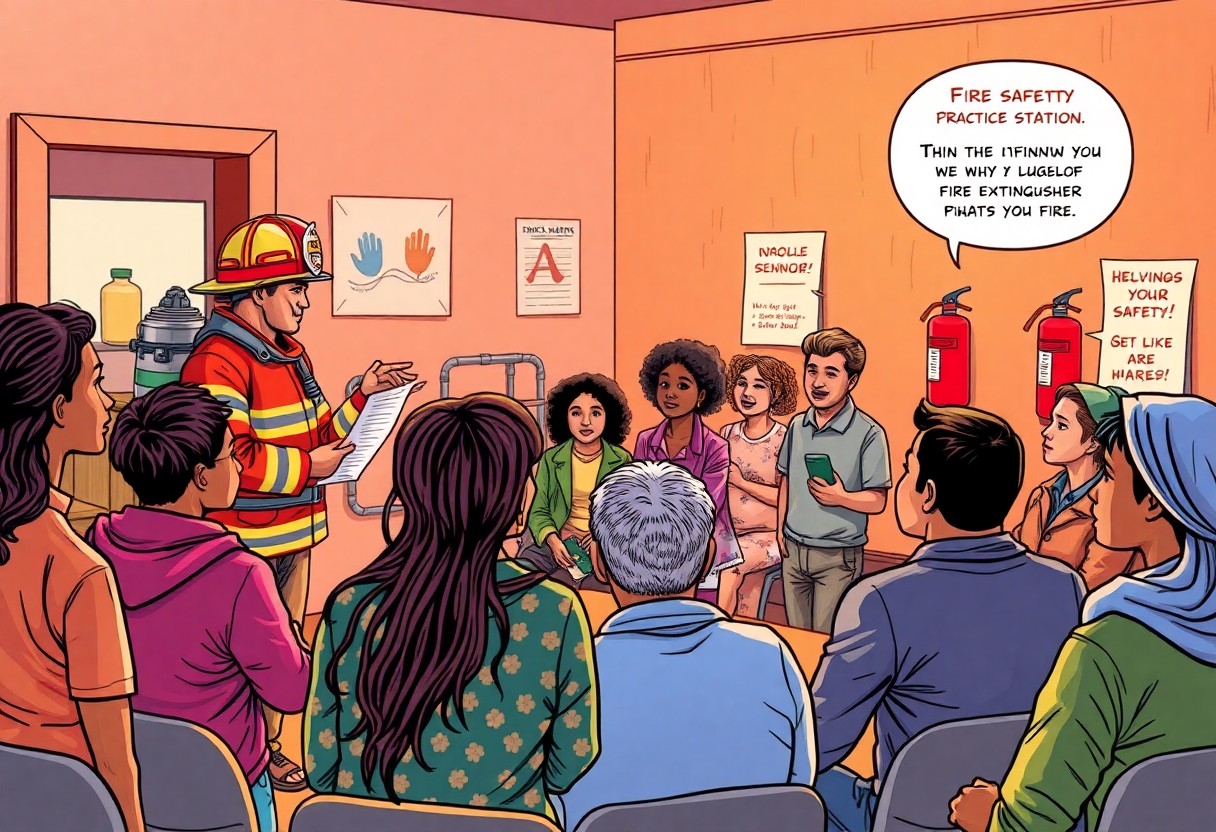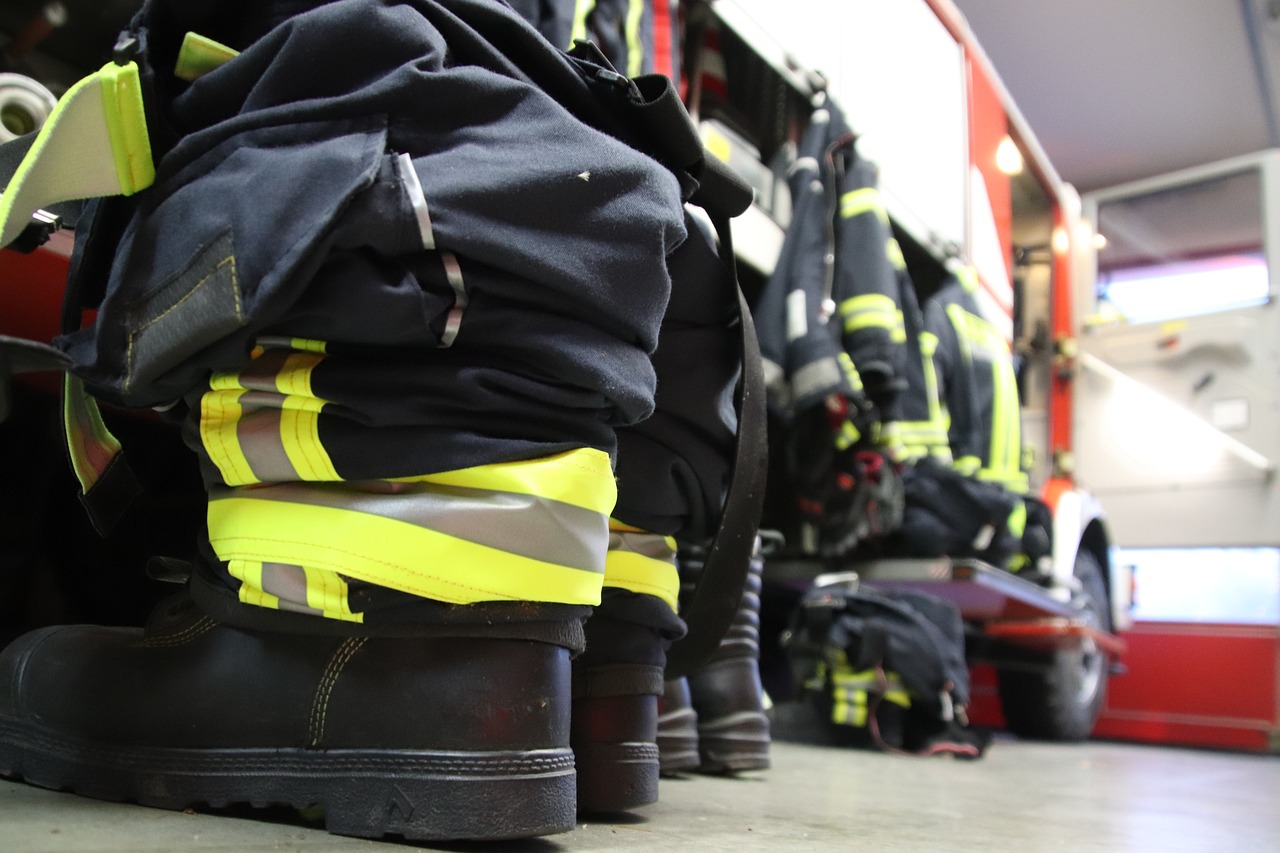Over time, community engagement has proven to be a powerful tool for increasing volunteerism in fire departments. By organizing informative and interactive public safety workshops, you can not only educate your community about fire safety but also ignite interest in volunteering. In this guide, you will discover effective strategies to design and execute workshops that not only capture attention but also inspire action within your community, leading to a stronger, more dedicated volunteer base for your fire department.
Key Takeaways:
- Interactive Activities: Incorporate hands-on demonstrations and group exercises that allow participants to actively engage with the material and each other.
- Community Involvement: Invite local leaders and community members to share their experiences, fostering a sense of belonging and encouraging more volunteers to join.
- Clear Communication: Clearly outline the benefits of volunteering, including personal growth, skills development, and community impact, to motivate potential recruits.
Understanding Volunteerism
While volunteerism plays a vital role in fostering a sense of community and commitment, it is particularly significant in the context of fire departments. Engaging volunteers not only enhances community safety but also builds strong local bonds, empowering volunteers to contribute meaningfully to their neighborhoods. By understanding the motivations behind volunteering, you can create workshops that resonate and encourage more individuals to get involved.
Importance of Volunteerism in Fire Departments
Importance of volunteerism in fire departments cannot be overstated. Volunteers provide important support, ensuring that your community is adequately protected during emergencies. They often serve as the backbone of the department, helping to fill staffing gaps and enhancing response capabilities. Furthermore, active volunteer programs can inspire individuals from diverse backgrounds to participate, enriching your team’s capabilities and fostering a greater sense of community involvement.
Factors Influencing Volunteer Engagement
If you want to boost volunteer engagement, it’s important to understand the various factors at play. Community interests, personal motivations, and organizational culture can all influence an individual’s decision to volunteer. Key elements that impact volunteerism include:
- Clear communication of roles and expectations
- Opportunities for personal and professional development
- Meaningful recognition for contributions
After identifying these factors, you can tailor your workshops to address and enhance these elements, making your fire department more attractive to potential volunteers.
With a deeper understanding of what drives volunteer engagement, you can implement strategies to create an inviting and supportive environment for potential volunteers. Consider aspects such as:
- Providing a welcoming onboarding process
- Building camaraderie among volunteers through team-building activities
- Creating flexible schedules to accommodate volunteers’ lifestyles
After focusing on these factors, you will likely see a positive shift in volunteer interest and commitment to your fire department, ultimately fortifying community safety.
Planning Your Workshop
One of the key elements in planning your public safety workshop is to ensure that every component aligns with your overall goals. Start by determining what you want to achieve through this workshop. Whether it’s raising awareness about fire safety, recruiting volunteers, or fostering community relationships, having a clear roadmap will help guide your decisions in the planning process and create a workshop that resonates with attendees.
Setting Clear Objectives
There’s power in defining specific, measurable objectives for your workshop. This clarity offers direction, shapes your content, and helps you evaluate success post-event. Consider what knowledge you want participants to gain or actions you’d like them to take afterward. Your objectives will not only keep the workshop on track but also ensure that participants leave with a sense of purpose.
Identifying Your Target Audience
With a clear plan in place, your next step is to identify your target audience. Understanding who you want to reach will help tailor the content and format of your workshop to engage participants effectively. Consider factors such as demographics, interests, and existing knowledge about fire safety. This information will allow you to create a workshop experience that resonates with attendees and encourages meaningful interactions.
Identifying your target audience involves considering their needs and expectations about public safety topics and programs. Do you aim to engage seasoned volunteers, first-time community members, or perhaps families with kids? Insights into their motivations and concerns can inform the workshop’s messaging and activities. Tailoring information to their experience will enhance engagement and foster a supportive atmosphere, increasing the likelihood of attracting new volunteers.
Creating Engaging Content
Many successful workshops focus on creating content that resonates with your audience. To enhance volunteerism, tailor your material to address relevant local issues and needs. Incorporate visuals, storytelling, and relatable examples to keep participants informed and interested. By making the content applicable to their lives, you will spark curiosity and encourage them to explore opportunities within your fire department.
Incorporating Interactive Elements
An effective way to engage participants is by incorporating interactive elements into your workshops. Activities such as group discussions, quizzes, and hands-on demonstrations can help keep your audience active and involved. By giving them a chance to share their thoughts and experiences, you not only maintain engagement but also foster a sense of community and connection.
Utilizing Real-Life Scenarios
With real-life scenarios, you can provide participants with relatable and practical examples that enhance their understanding of public safety issues. By discussing incidents that have occurred in your community or recent emergency situations, you can illustrate your points effectively and inspire action.
The use of real-life scenarios allows you to illustrate the importance of volunteerism in your fire department. Sharing success stories of volunteers during critical incidents can motivate others to join your efforts. Additionally, incorporating role-playing or simulations related to these scenarios can further enhance engagement, enabling participants to experience firsthand the impact they can make in their community. By showing the real outcomes of volunteer contributions, you can inspire potential recruits to become active members of your team.
Effective Promotion Strategies
Your promotion strategies can make or break the success of your public safety workshops. By leveraging multiple channels such as social media, community events, and local partnerships, you can effectively reach and engage potential volunteers. Craft compelling messages that highlight the importance of your workshops, and tailor your outreach to address the interests of your audience. A well-rounded approach will not only increase attendance but also foster a sense of community around your fire department.
Leveraging Social Media
There’s no denying the power of social media in reaching diverse audiences. Utilizing platforms like Facebook, Twitter, and Instagram allows you to share images, videos, and testimonials that underscore the value of your workshops. Create event pages, engage followers with interactive posts, and encourage sharing to expand your workshop’s visibility.
Engaging Local Communities
An effective way to promote your workshops is by actively engaging local communities. Consider hosting events at community centers or partnering with local organizations that share your mission. This approach fosters goodwill and provides opportunities to present your workshops in a relatable context.
To engage local communities, develop relationships with schools, churches, and neighborhood organizations. Offer informational sessions or demonstrations at their events to showcase the impact of your fire department’s work. By addressing community-specific concerns and promoting safety tips, you not only increase awareness of your workshops but also build trust and rapport that encourages volunteerism.
Facilitating the Workshop
Once again, it’s vital to create an inviting atmosphere during your public safety workshop. Your role as a facilitator is not just to present information but to engage participants actively. Use a variety of teaching methods, such as discussions, demonstrations, and hands-on activities, to appeal to different learning styles. Make sure to set clear objectives and provide a roadmap for the session, so participants know what to expect and how they can contribute.
Best Practices for Delivery
You should aim to deliver your content in a clear and engaging manner. Use visual aids, storytelling, and real-life examples to make your points resonate. Consider breaking down complex information into manageable segments and inviting questions throughout to maintain participants’ interest and understanding. Tailor your delivery to suit the group’s knowledge levels, ensuring everyone feels included.
Encouraging Participant Interaction
Now, involving participants actively is key to a successful workshop experience. By fostering an environment of collaboration, you encourage attendees to share their thoughts, ask questions, and engage in discussions. Utilize small group activities or breakout sessions to facilitate interaction among participants, allowing them to form connections with each other while deepening their understanding of the workshop topics.
Participant interaction is vital as it enhances learning retention and ownership of the material. When attendees feel comfortable sharing their perspectives or experiences, it cultivates a sense of community and belonging that can translate into increased volunteerism. Incorporate icebreakers and hands-on exercises to break down barriers and create an open dialogue, encouraging participants to support and challenge each other constructively.
Evaluating the Workshop’s Impact
To assess the effectiveness of your public safety workshops, you need to evaluate their impact on both participants and volunteer recruitment. This involves analyzing feedback, gauging engagement levels, and correlating these factors to any changes in volunteer sign-ups. By understanding what worked and what didn’t, you can refine future workshops to better meet the goals of your fire department and foster a stronger community connection.
Gathering Feedback
You should actively seek feedback from participants immediately after the workshop. This can be done through surveys, informal discussions, or feedback forms that can provide insights on what resonated with them. Understanding their perception will help you tailor future workshops for maximum impact.
Measuring Volunteer Recruitment Success
Now, assess how many participants convert into volunteers after the workshop. Track sign-up rates, application submissions, and overall engagement in volunteer activities. This data will provide you with a clear picture of the workshop’s effectiveness in inspiring community members to take action.
Plus, consider conducting follow-up surveys at various intervals post-workshop to monitor any changes in volunteerism over time. This ongoing evaluation allows you to identify any long-term trends or shifts in attitudes towards volunteering. Gathering this data helps in understanding the workshop’s lasting impact on the community’s willingness to engage with the fire department and fosters a sustainable volunteer base.
Conclusion
Presently, running engaging public safety workshops can significantly enhance your fire department’s volunteerism efforts. By focusing on interactive activities, community involvement, and practical skills, you can create an inviting atmosphere that encourages participation. Tailor your workshops to the interests of your audience and consistently gather feedback to ensure improvement. Connecting with your community through these initiatives not only fosters a sense of belonging but also amplifies support for your fire department, ultimately enhancing your team’s impact and sustainability.



